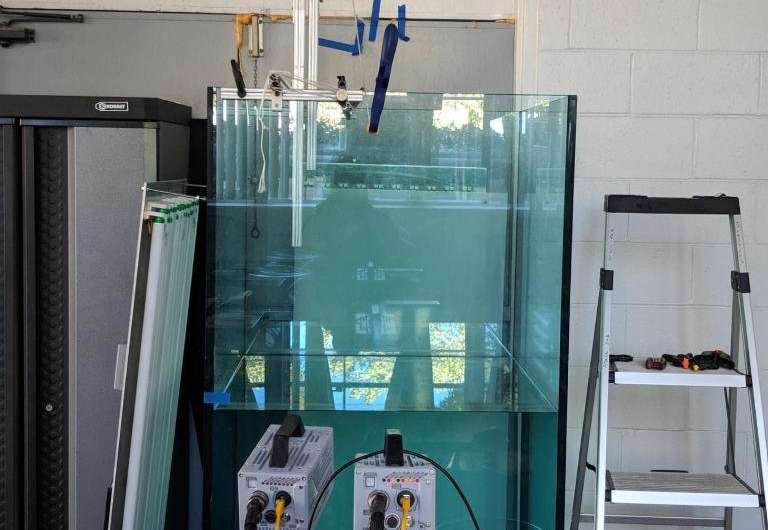Reducing the impact forces of water entry

When professional divers jump from a springboard, their hands are perpendicular to the water, with wrists pointed upward, as they continue toward their plunge at 30 mph.
As they complete what's known as a rip dive, their hands remove water in front of the body, creating a cavity that reduces the initial impact force. The rest of the body, from head to toe, is aligned to shoot through the same cavity created by the hands.
Using the hands to create cavities in the water's surface is similar to the concept behind the fluid-structure studies that researchers at Utah State University are conducting using spheres.
Utah State researcher Rafsan Rabbi will present his team's research at the American Physical Society's Division of Fluid Dynamics 71st Annual Meeting, which will take place Nov. 18-20 at the Georgia World Congress Center in Atlanta, Georgia.
In one study, two consecutive spheres falling into a water tank were tested. The first sphere dropped into the water to create the cavity was made of steel. Five different sizes were used. The diameters ranged from 10 millimeters to 38 millimeters, but they were always smaller than the second sphere.
The second sphere, which went through the cavity, was made from 3-D-printed Vero plastic. These spheres had a fixed diameter of 50 mm (or about 2 inches). Attached to each of these plastic objects was an accelerometer.
The researchers investigated how much acceleration the plastic spheres experienced as they went through the cavity created by the first steel spheres and calculated the force reductions from that. They found that the impact force of the plastic spheres was reduced by the steel ones by 40-60 percent.
"We have found that this 'free surface preparation' phenomenon can have a huge impact in reducing the initial high-impact force any object experiences while falling into a body of water," Rabbi said.
The research could have practical applications, such as lessening the blow of rockets landing unintentionally into the ocean.
A second study used Worthington jets instead of cavities to reduce the impact force. Such a jet results from a cavity collapsing on itself. The spacing between the two spheres were fixed in such a way that after the cavity collapses, the second sphere falls through the jet.
"This also reduced the impact force dramatically by up to 60 percent," said Tadd Truscott, director of the Splash Lab at Utah State who heads the research team. "Our studies show that prior preparations to the surface create a disturbance in the water surface to help cushion the impact of any falling object."
More information: Presentation M05.2, "Surviving a cliff jump: go second" by Rafsan Rabbi, Nathan B. Speirs, Jesse L. Belden and Tadd T. Truscott, will be Tuesday, Nov. 20, 8:13 a.m. in Room B207 of the Georgia World Congress Center in Atlanta. Abstract: meetings.aps.org/Meeting/DFD18/Session/M05.2
Provided by American Physical Society




















